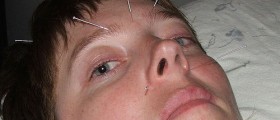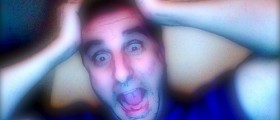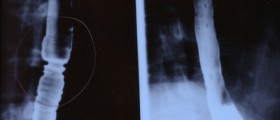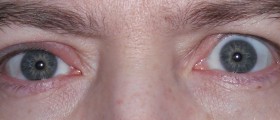
Myokymia is involuntary, spontaneous fascicular contraction of a few muscle bundles. It occurs with no connection to muscle atrophy or weakness. In case of eyelid myokymia contractions basically affect the orbicularis oculi muscle of the lower eyelids although the upper eyelids may be sometimes affected. Eyelid myokymia is considered a benign and self-limited condition which has no clear connection with other diseases. Still, there are cases when the problem actually originates from some underlying diseases such as hemifacial spasm or blepharospasm. Meige syndrome as well as spastic-paretic facial contracture are two more conditions that may induce eyelid myokymia.
Eyelid Myokymia Pathophysiology
Unfortunately, pathophysiology of eyelid myokymia has not been fully explained yet. It is, however, highly likely that muscle contractions occur as the consequence of nerve irritation. One more hypothesis includes pontine dysfunction in the region of the facial nerve.
There are some potential triggers as well as precipitating factors that may be associated with eyelid myokymia. These include excessive stress, fatigue, increase caffeine and alcohol intake.
It is not possible to obtain sufficient data regarding the incidence of myokymia because not many patients turn to their doctors when eye contractions occur. The explanation is quite simple. Namely, the twitching soon resolves and one in no time forgets about all the previous discomfort.
Eyelid Myokymia Symptoms and Signs
If the problem persists patients visit their health care providers. They generally complain about sporadic twitching of one of the lower or upper eyelids. These contractions affect only one eye and sometimes linger for months. Fortunately, they are only intermittent. In some cases contractions can be quite intensive and cause oscillopsia (a visual disturbance in which objects in the field of vision appear to oscillate). Such patients may report exposure to stress, fatigue or excessive consumption of stimulating substances such as caffeine or alcohol.
If muscle contractions occur during examination, they can be easily noticed. They may cease if the eyelid is pulled manually. Severe contractions can induce fine nystagmus-like eye movements.Eyelid Myokymia Treatment
Many people benefit after precipitating factors are removed. Severe contractions can be brought under control with local, subcutaneous injection of botulinum toxin. It is essential and pay close attention while injecting Botox. Inappropriate administration of the toxin may result in ptosis, temporary eyelid laxity associated with lagophthalmos and keratopathy.
If the problem is only one characteristic of other conditions (Meige syndrome, blepharospasm etc.), it can be dealt with once the underlying condition is treated.

















Your thoughts on this
Loading...